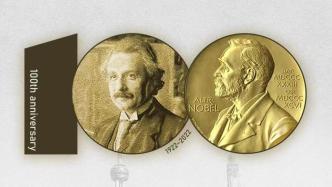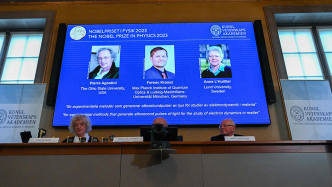

Anne L'Huillier, a professor at Lund University in Sweden, is the fifth woman to be awarded the Nobel Prize in Physics. Video screenshot: Nina Ransmyr, Lund University
If the camera is fast enough, everything captured will be "slow motion".
Hummingbirds can beat their wings 80 times per second. The human eye cannot see clearly, but high-speed cameras can freeze its actions into clear frames.
24 years ago, the 1999 Nobel Prize in Chemistry was awarded to Ahmed H. Zewail, a professor at the California Institute of Technology in the United States, who used the world's fastest "camera" at the time. He used femtosecond lasers to see the transition states of chemical molecules during reactions.
Now, the world's fastest "camera" has been upgraded again, speeding up a thousand times, leaping from femtosecond to attosecond, "seeing" the movement of electrons in molecules, and winning the 2023 Nobel Prize in Physics.
Attosecond light pulse ("attosecond pulse" for short) is an extremely short flash of light, which provides a camera "shutter" that opens and closes very quickly, which can "photograph" the rushing electrons.
The scientists who invented this new tool and new technology for basic science have brought mankind into the attosecond era.
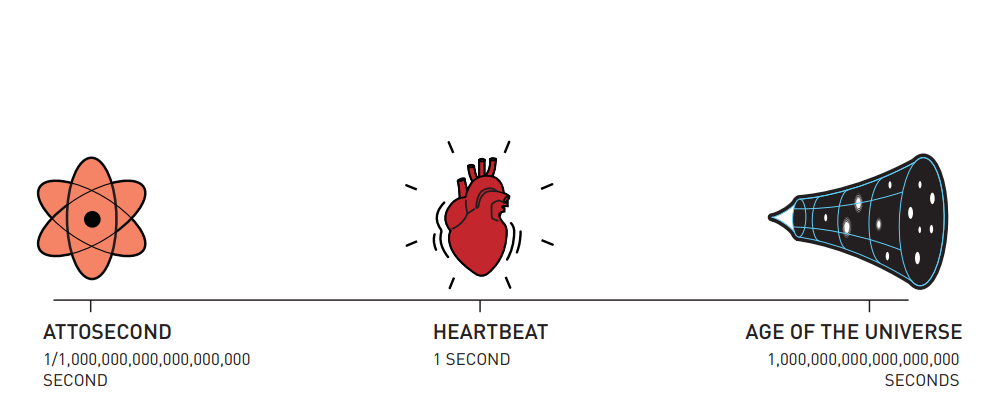
The number of attoseconds in one second is the same as the number of seconds that have elapsed since the creation of the universe 13.8 billion years ago. Photo: Johan Jarnestad
It takes approximately 150 attoseconds for an electron to orbit the nucleus of a hydrogen atom.
The current world record for attosecond pulses is 43 attosecond pulses.
On the afternoon of October 3, Fang Shaobo, associate researcher and doctoral supervisor at the Institute of Physics, Chinese Academy of Sciences, told The Paper that there are still technical difficulties in further enhancing attosecond pulses. The current world record holder of 43 attosecond pulses, Thomas Gaumnitz from Germany, was busy building an attosecond pulse light source during his PhD studies, so he never published a paper. It was not until his postdoctoral period that he published the first paper. research papers.
Liu Yi, a professor and doctoral supervisor at the School of Optoelectronic Information and Computer Engineering at the University of Shanghai for Science and Technology, told The Paper that among the three Nobel Prize winners in physics in 2023, the one he is most familiar with is Anne L'Huillier. Since 2014, the two parties have cooperated on air laser and other related topics, and have conducted 4 collaborative experiments in the Anne Laboratory.
Liu Yi introduced that Anne was born in Paris, France, and studied for a doctorate in France. She is gentle, reserved, doesn't talk much, but is very wise. She is very knowledgeable about wine and can distinguish the vintage of different wines.
Anne is the fifth woman to be awarded the Nobel Prize in Physics.
Liu Yi said that shorter pulses, higher energy and higher repetition frequency are the three dimensions that people are working hard on in the field of attosecond pulses. In addition to improvements in pump lasers and production media, he said that the focusing lenses used in ordinary laboratories are 1 meter or 2 meters long, but in some EU laboratories the focusing lenses used are up to 50 meters long. Produces stronger attosecond pulses.
Attosecond pulses: the fastest light? wrong!
Some people intuitively believe that attosecond pulses are the fastest light, so they can track erratically moving electrons.
But in fact, in the same medium, the speed of light does not change.
"To be more precise, it is the shortest, currently the shortest light pulse." Liu Yi told The Paper that the electronic world can be explored with the shortest light pulse. But there are time units shorter than attoseconds - square seconds (10^-21 seconds), unit seconds (10^-24 seconds), etc. "Human exploration of nature is endless."
If we simply think of electrons as "supercars" or bullets around the nucleus, then the attosecond pulse is like a camera shutter that opens and closes very quickly, which can "photograph" the electrons.
Liu Yi said, "It's like a bullet flying past. If the shutter of your camera is not fast enough, what you will photograph is a line or a shadow instead of a clear bullet. The attosecond pulse provides a very fast 'shutter' , the exposure time scale is very short.”
Stillness is relative.
Fang Shaobo told The Paper that the reason why the exposure time is short is so that between the opening and closing of the shutter, the subject is almost stationary, or the distance it moves is short enough, otherwise it will be difficult to freeze a clear moment.
At about 17:50 on the 3rd, Beijing time, the Royal Swedish Academy of Sciences announced that the 2023 Nobel Prize in Physics will be awarded to the three scientists who invented this extremely short flash technology - Pierre Argo, emeritus professor of The Ohio State University in the United States. Pierre Agostini, Ferenc Krausz, professor at the Max Planck Institute for Quantum Optics in Germany, and Anne L'Huillier, professor at Lund University in Sweden, For their contributions to "experimental methods of generating attosecond light pulses to study electron dynamics in matter."
Attosecond is the pulse width of a light pulse. Liu Yi explained, "The concept of pulse width is not that abstract. For example, take a laser pointer. When we press our finger to turn on the laser pointer, and then turn it off, a laser pulse is generated. The pulse width is the duration of the pulse. . If someone can press and release the laser pointer within 1 attosecond, and the laser pointer responds quickly enough, then it can also generate attosecond pulses . However, no one can press that fast, and the laser pointer is not that fast either. response.."
Femtosecond laser can "click" so fast.
One attosecond is equal to one thousandth of a femtosecond, which is equivalent to 10⁻¹⁸ seconds. The number of attoseconds in one second is the same as the number of seconds that have elapsed since the creation of the universe 13.8 billion years ago. It takes 10 billion attoseconds for a beam of light to shine from one wall to another in a room.
Using femtosecond lasers to drive media such as gases can produce attosecond-scale light pulses.

Femtosecond laser is used as a driving light to produce extreme ultraviolet or shorter wavelength attosecond coherent radiation through a high-order harmonic process. Photo: Johan Jarnestad
A paper published in the Chinese academic journal "Physics" in 2021 by Wei Zhiyi, a researcher at the Institute of Physics of the Chinese Academy of Sciences, and others stated that ultrafast lasers entered the femtosecond laser era in the 1980s. An important use of strong-field ultrafast laser pulses is as driving light to produce attosecond coherent radiation of extreme ultraviolet or shorter wavelengths through high-order harmonic processes. Taking gas high-order harmonics as an example, when an inert gas interacts with a strong-field laser, two attosecond pulses are generated for each laser cycle. The three-step model of gas harmonics believes that the laser field will first cause tunneling ionization of gas atoms, and the released photoelectrons will move under the action of the electric field. The accelerated photoelectrons will eventually recombine with the parent ions, causing the atoms to return to their original state. In the quantum state, excess energy is released in the form of high-energy photons , that is, higher harmonics.
Unpopular area! Solved the principle problem 36 years ago and broke through the technical problem 20 years ago
"If you think it is the fastest thing in the world, how can you prove that it is the fastest ?" Fang Shaobo asked.
He said that unless there is a faster "shutter", one can quantitatively measure how fast the "shutter" of the attosecond pulse is.
Fang Shaobo introduced that in 1987, Anne conducted experiments on high-order harmonics, laying the foundation for attosecond pulses. But higher harmonics could only bring attosecond pulse trains at that time.
"You can simply imagine the attosecond pulse train as a string of bullets. Each bullet has its own color, red, orange, yellow, green, blue, indigo, and violet. But what people need may just be an extreme ultraviolet bullet." Fang Shaobo said that accurate measurement would like to be used It's a "bullet" - an isolated attosecond pulse, not a bunch. This is equivalent to picking out one bullet from a series of machine gun bullets, which is very difficult. Pierre Agostini and Ferenc Kraus both published important papers in 2001, completing the generation and measurement of attosecond pulses, "and using different measurement techniques. Since then, Everyone has reached a consensus that human optical technology has entered the attosecond era."
It took at least 20 years for researchers in the field of attosecond pulses to win their first Nobel Prize.
Fang Shaobo said that attosecond pulse was not a popular field before. First of all, the generation efficiency of high-order harmonics was very low at that time. Many people even thought that this was a stupid method. They thought that it wasted a lot of energy to get such a small amount of light pulses, and it was just "miraculous with great force", so it was not accepted by many people. Optimistic; the second reason is that the generation of high-order harmonics requires the use of a short-pulse femtosecond laser. At that time, not many laboratories had such lasers. The technology for generating isolated attosecond pulses is currently relatively mature. But there is still a problem that has not been overcome: how to improve its light intensity or production efficiency?
According to the official website of the Nobel Prize, in 1987, Anne discovered that when she transmitted infrared laser light through an inert gas, many different "overtones" of light were produced. Each "overtone" is a light wave. They are caused by the laser's interaction with atoms in the gas. The electrons gain extra energy and are emitted as light. Anne continued to explore this phenomenon, laying the foundation for subsequent breakthroughs.
In 1994, Agostini and his collaborators studied the principle of frequency modulation in two-color photon fields. This principle was later developed into the metrology technology of RABBIT (Reconstruction of Attosecond Beats by Two-Photon Transition Interference). The technique measures the duration of a series of attosecond pulses by focusing XUV (extreme ultraviolet) pulses and light from a driving laser onto a rare gas target and analyzing the photoelectrons generated from the target.
In 2001, Pierre Agostini successfully generated and studied a series of consecutive light pulses, each of which lasted only 250 attoseconds. Meanwhile, Ferenc Kraus was conducting another type of experiment that could isolate a single pulse of light lasting 650 attoseconds.

Two laser beams were used to generate attosecond pulses and observe the experiment. Photo: Johan Jarnestad
Attosecond pulse technology makes it possible to study previously untraceable fast processes, such as the movement of electrons, or the rapid transfer of energy. This opens a window into the study of electron dynamics in atoms, molecules and condensed matter.
Eva Olsson, chair of the Nobel Committee for Physics, said, “We can now open the door to the world of electrons. Attosecond physics gives us the opportunity to understand the mechanisms of electronic control, and the next step will be to exploit them. "
Can it be used in ultra-high sensitivity detection or win the next Nobel Prize?
Attosecond pulses have potential applications in fields such as materials science and medical diagnosis.
Fang Shaobo introduced that Ferenc Kraus, the youngest of the three winners, focused on blood testing after doing basic research on attosecond pulses. He hopes to extend the measurement method of attosecond pulses to blood testing, hoping to bring an ultra-highly sensitive detection technology. He did an experiment: dilute the concentration of a cup of sugar water continuously until the concentration cannot be detected by all existing commercial detection methods, then dilute it 1,000 times, and then use Ferenc Kraus's method to detect it. out of its sugar content.
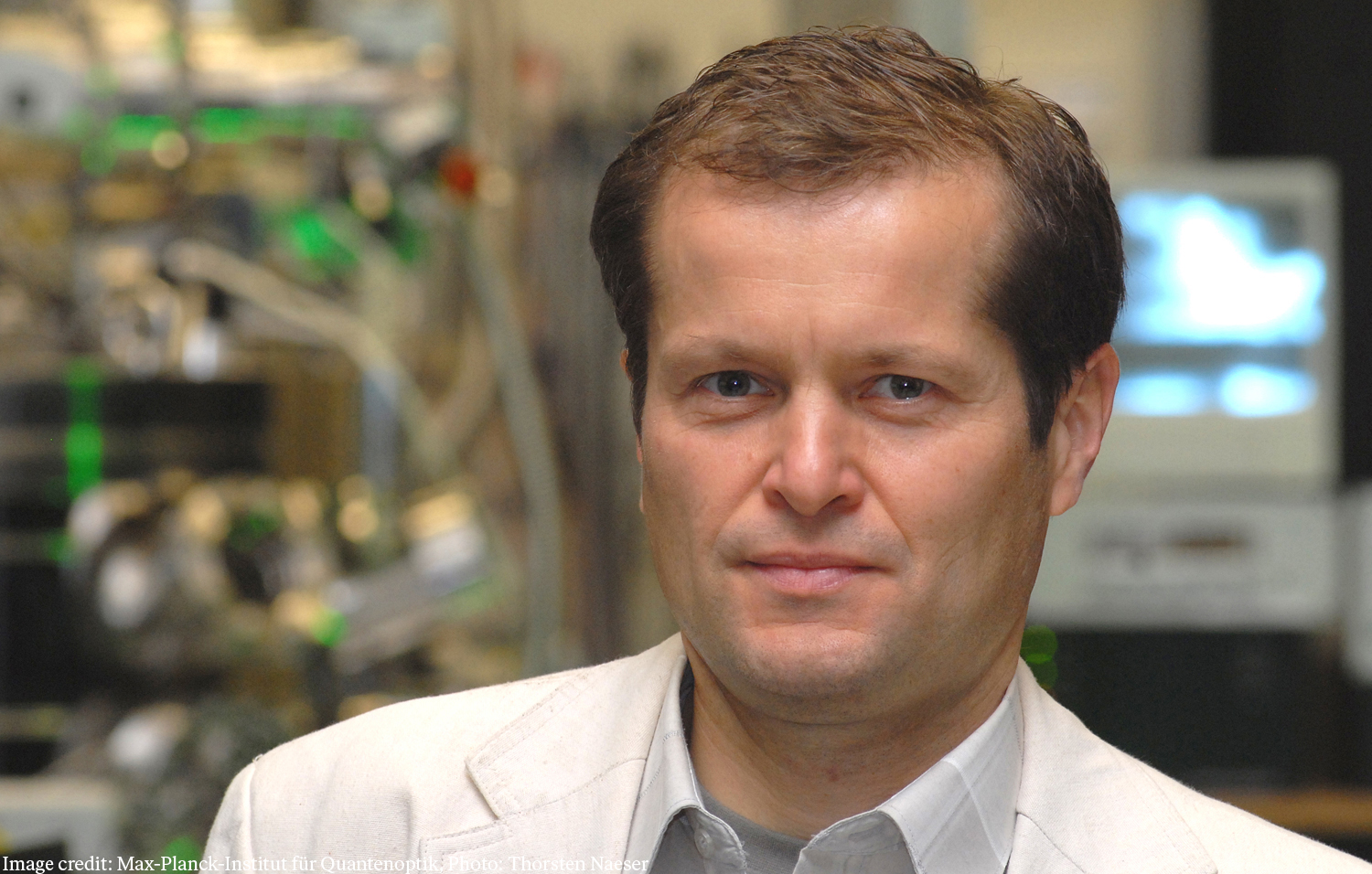
Ferenc Krausz, winner of the 2023 Nobel Prize in Physics and professor at the Max Planck Institute of Quantum Optics in Germany.
Ferenc Klaus was born in Hungary on May 17, 1962.
According to the official website of the Nobel Prize, Ferenc Kraus’s research group has taken the first step towards biological applications. By combining broadband optics, ultrafast laser sources and precise femtosecond-to-atosecond field analysis technology, the Kraus research group has developed optical electric field molecular fingerprinting technology that can detect changes in the molecular composition of biological fluids. This holds promise as a new in vitro diagnostic assay for detecting trace amounts of disease-signature molecules in blood samples. Its biggest advantage is that it can monitor many molecules simultaneously, and the radiation is non-ionizing, so it will not cause harm to the human body.
Fang Shaobo said that to explain the principle of this detection in a layman's terms, it actually involves accurately scanning or detecting the entire light field and confirming the phase of the relevant photons. "Each molecule has a different vibrational frequency to it," like a molecular fingerprint, so this method can detect a very wide variety of molecules in the blood.
Some commentators say that if this new molecular detection method is successfully applied, Krause may even win a second Nobel Prize.
Fang Shaobo said that at present, attosecond pulse technology still needs the expansion and application of more disciplines. Our country also has a layout in the field of attosecond science, and has given attention and support from the national level to the Chinese Academy of Sciences level. The Chinese Academy of Sciences has provided stable support to research projects such as atomic-scale attosecond ultrafast dynamics and attosecond science and technology in the Youth Team Program.
According to the WeChat public account of the Institute of Physics of the Chinese Academy of Sciences, in 2013, Wei Zhiyi’s research group of the Institute of Physics of the Chinese Academy of Sciences achieved experimental results of 160 attosecond isolated attosecond pulse measurement, which was a major breakthrough in the field of attosecond science in my country. Subsequently, research teams from Huazhong University of Science and Technology, National University of Defense Technology and Xi'an Institute of Optics and Precision Mechanics, Chinese Academy of Sciences also successively realized the generation and measurement of attosecond pulses.
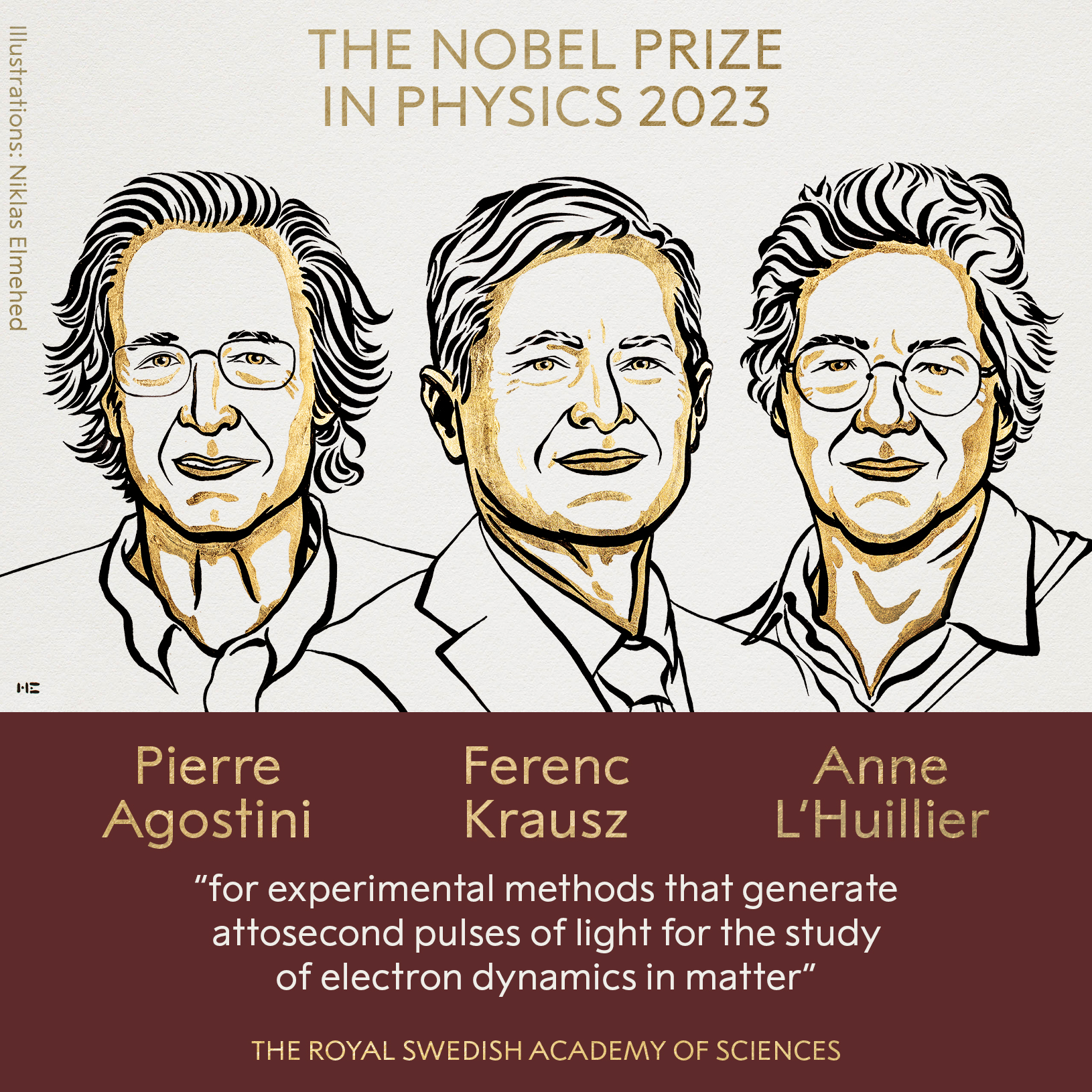
Winners of the 2023 Nobel Prize in Physics: Pierre Agostini (left), professor emeritus of The Ohio State University, USA, and Ferenc Kraus, professor of the Max Planck Institute for Quantum Optics in Germany (Ferenc Krausz, center) and Professor Anne L'Huillier (right) of Lund University, Sweden.
